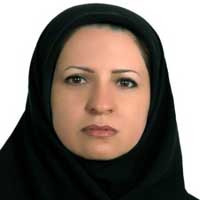Multicenter Identification and Antifungal Susceptibility Patterns of Candida Species Isolated from Clinical Samples
Author(s):
Article Type:
Research/Original Article (دارای رتبه معتبر)
Abstract:
Background
Invasive fungal infections without proper treatment could lead to high mortality rate, especially in immunocompromised patients. Candida species distribution and drug susceptibility patterns vary in different areas. Understanding the etiologic agents and drug susceptibility patterns in each region are required for the best management of patients with Candida infections.Objectives
The aim of this study was to identify Candida species isolated from clinical samples of six university hospitals in Iran and detect their susceptibility patterns to seven antifungal agents.Methods
Clinical samples from patients with fungal infections were cultured on Sabouraud dextrose agar. Isolated yeasts were identified by API 20C AUX kit, according to the manufacturers instructions. Drug susceptibility patterns to amphotericin B, caspofungin, voriconazole, fluconazole, posaconazole, itraconazole and ketoconazole were determined, according to CLSI M27-A3 and S4.Results
In total, 428 species of Candida were isolated from clinical samples (1950 samples). Most isolated species were Candida albicans, followed by C. tropicalis, C. parapsilosis, C. kefyr, C. famata, C. glabrata, C. krusei, C. dubliniensis, C. guilliermondii and C. lusitaniae. Sensitivity rate of C. albicans to amphotericin B, caspofungin, voriconazole, fluconazole, and itraconazole was 96.6%, 99.5%, 88.6%, 90.6%, and 52% with MIC90 values equal to 0.25 µg/mL, 0.125 µg/mL, 0.125 µg/mL, 2 µg/mL, and 1 µg/mL, respectively. The MIC 90 values for ketoconazole and posaconazole were 0.125 µg/mL and 0.064 µg/mL, respectively. Different sensitivity to antifungal agents was present in non-albicans Candida species especially in C. krusei, C. glabrata, and C. tropicalis.Conclusions
According to this study, C. albicans is the most prevalent etiologic agent in infected patients and caspofungin is the most effective antifungal agent. Knowledge about etiologic agents and their susceptibility patterns in each region is helpful for successful treatment of the patients.Keywords:
Language:
English
Published:
Jundishapur Journal of Microbiology, Volume:10 Issue: 12, Dec 2017
Page:
2
magiran.com/p1786030
دانلود و مطالعه متن این مقاله با یکی از روشهای زیر امکان پذیر است:
اشتراک شخصی
با عضویت و پرداخت آنلاین حق اشتراک یکساله به مبلغ 1,390,000ريال میتوانید 70 عنوان مطلب دانلود کنید!
اشتراک سازمانی
به کتابخانه دانشگاه یا محل کار خود پیشنهاد کنید تا اشتراک سازمانی این پایگاه را برای دسترسی نامحدود همه کاربران به متن مطالب تهیه نمایند!
توجه!
- حق عضویت دریافتی صرف حمایت از نشریات عضو و نگهداری، تکمیل و توسعه مگیران میشود.
- پرداخت حق اشتراک و دانلود مقالات اجازه بازنشر آن در سایر رسانههای چاپی و دیجیتال را به کاربر نمیدهد.
In order to view content subscription is required
Personal subscription
Subscribe magiran.com for 70 € euros via PayPal and download 70 articles during a year.
Organization subscription
Please contact us to subscribe your university or library for unlimited access!



